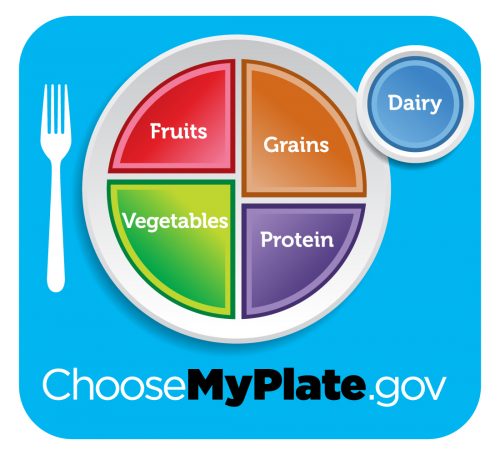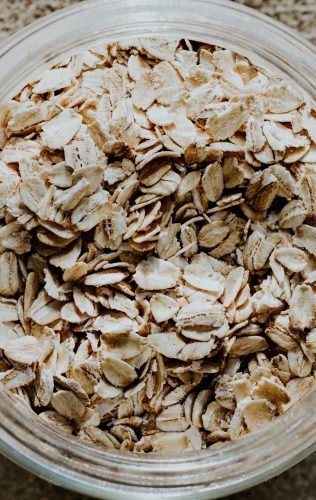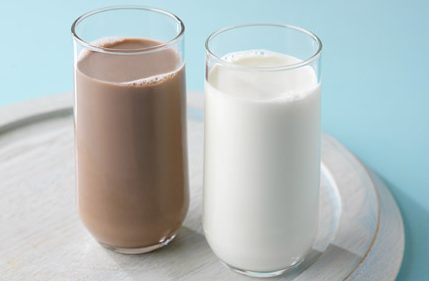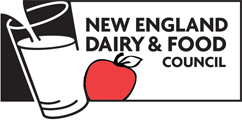In 2017, the United States Department of Agriculture, which funds and administers the National School Lunch Program (NSLP) and the School Breakfast Program (SBP), announced significant interim changes to the school meal program guidelines for the 2017-2018 school year. Prior to this, the last major update to the guidelines had been made in 2012, when school meal regulations were updated to reflect the latest Dietary Guidelines for Americans (at that time). The update, announced in May 2017, allowed schools greater flexibility while working within the nutrition standards established for school meal programs.
 For next school year (2018-2019), the interim guidelines will look very similar to how they did this past year. It will be the following school year, 2019-2020, when the USDA expects to issue final regulations, following a two-year interim period. To break this down, let’s start by looking at the 2017-2018 school meal guideline updates for whole grains, sodium, and milk, per the USDA.
For next school year (2018-2019), the interim guidelines will look very similar to how they did this past year. It will be the following school year, 2019-2020, when the USDA expects to issue final regulations, following a two-year interim period. To break this down, let’s start by looking at the 2017-2018 school meal guideline updates for whole grains, sodium, and milk, per the USDA.
2017-2018: Updates to school meal program guidelines
Whole Grains
Previous Guidelines: All grains served as part of the NSLP or SBP must be whole grain-rich (meaning they are either 100% whole grain or 50% whole grain, with the other 50% being enriched grain).

2017-2018 Flexibilities Enacted: Certain grain foods may be exempt from meeting these guidelines if the school nutrition services can demonstrate hardship(s) in procuring, preparing, or serving the compliant whole-grain rich product. To qualify for exemption, at least half of the grains offered on a weekly basis must be whole grain-rich, and at least half of all grains offered must be whole grain-rich.
Why the Guidelines were Updated: Schools and industry have expressed the need for additional time and assistance to effectively achieve changes in the school meal patterns as they pertain to whole grains.
Sodium
Previous Guidelines: A timeline for decreasing the amount of sodium in school meals over a period of several years was established in 2012 by the USDA and includes two phases. The first phase required schools reach an acceptable sodium level (Target 1) set forth by the USDA by the 2014-2015 school year. The second phase involved further decreasing the sodium in meals to reach final target levels (Target 2) by the 2017-2018 school year.
2017-2018 Flexibilities Enacted: The timeline is still being implemented, however schools that have not yet reached final target levels but are working meeting that requirement will not be penalized. At a minimum, these schools must be compliant with Target 1 sodium levels.
Why the guidelines were updated: Schools and industry have expressed the need for additional time and assistance to effectively achieve changes in the school meal patterns as they pertain to sodium.
Low-fat milk

Previous Guidelines: Schools have the option to serve both flavored and unflavored milk, as long as the flavored option is fat-free, and the unflavored milk is fat-free or 1%.
2017-2018 Flexibilities Enacted: Schools have the option to offer low-fat (1-percent milk fat), flavored milk as part of school meals. In order to qualify for this, schools must demonstrate hardship by documenting a reduction in student milk consumption or an increase in school milk waste.
Why the guidelines were updated: The goal of offering additional milk options is to increase fluid milk consumption and ensure children receive the nutrients provided by milk.
What will the 2018-2019 school year look like?
The guidelines are similar to the previous school year to continue addressing the significant challenges faced by those implementing school meal programs, per the USDA.
Whole grains: (No change) Exemptions may be granted to schools that demonstrate hardship(s) in procuring, preparing, or serving compliant whole grain-rich products, as along as at least 50% of all grains served are whole grain-rich.
Sodium: At a minimum, schools must be compliant with Target 1 sodium levels. The USDA anticipates that this rule will remain in effect through at least the send of the 2020-2021 school year, and also anticipates a re-evaluation of the sodium reduction timeline (neither have been confirmed yet).
Low-fat milk: All schools have the option to serve low-fat, flavored milk as a part of reimbursable meals and are not required to demonstrate a reduction in student meal consumption or an increase in milk waste.
For information about why these guidelines mostly remained the same, read the interim final rule for the 2018-2019 school year.

The school meal nutrition guidelines for the 2019-2020 school year have not yet been announced, but will likely be sometime in the near future.For school meal program resources, visit the USDA’s Tools for Schools. For more information about school milk and nutritional information about flavored milk, visit our Flavored Milk page.


